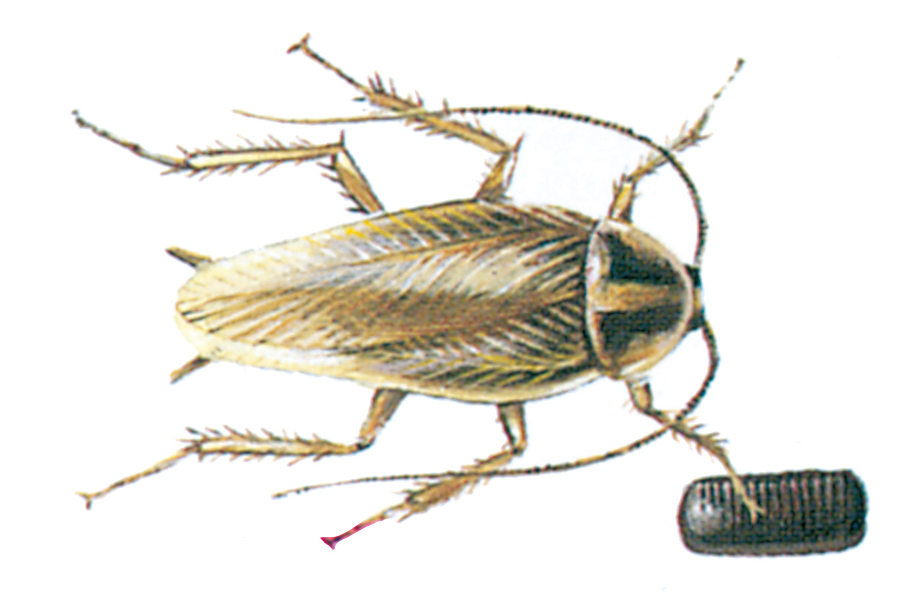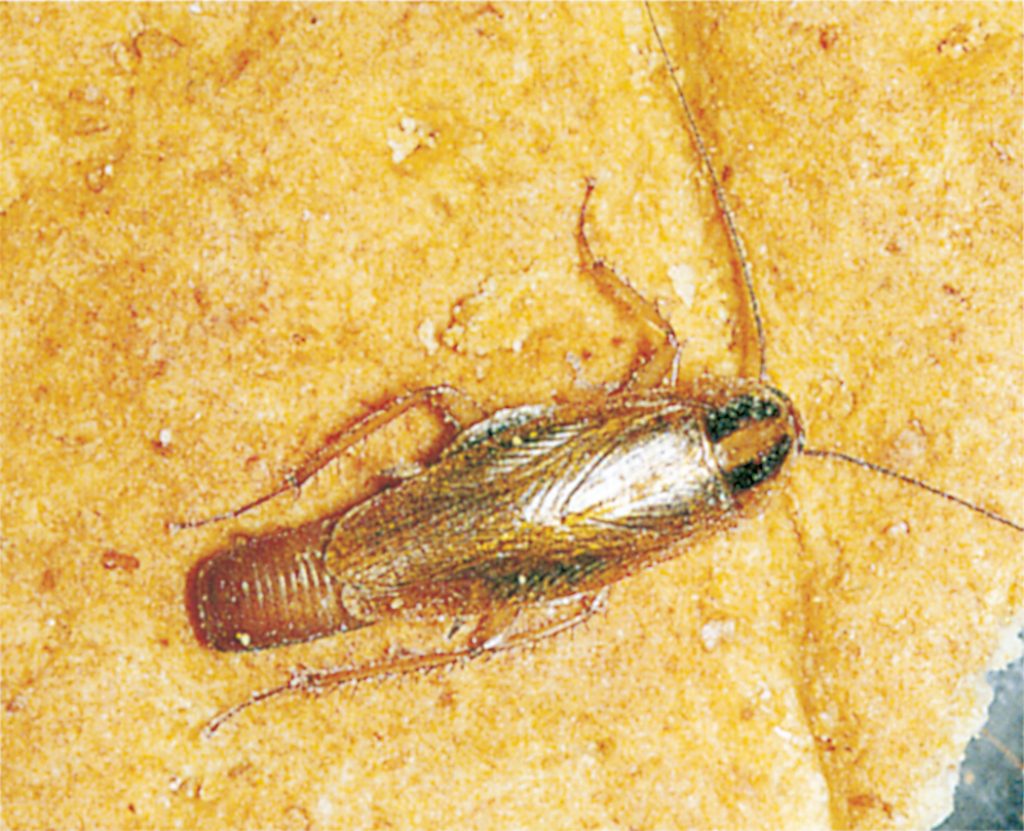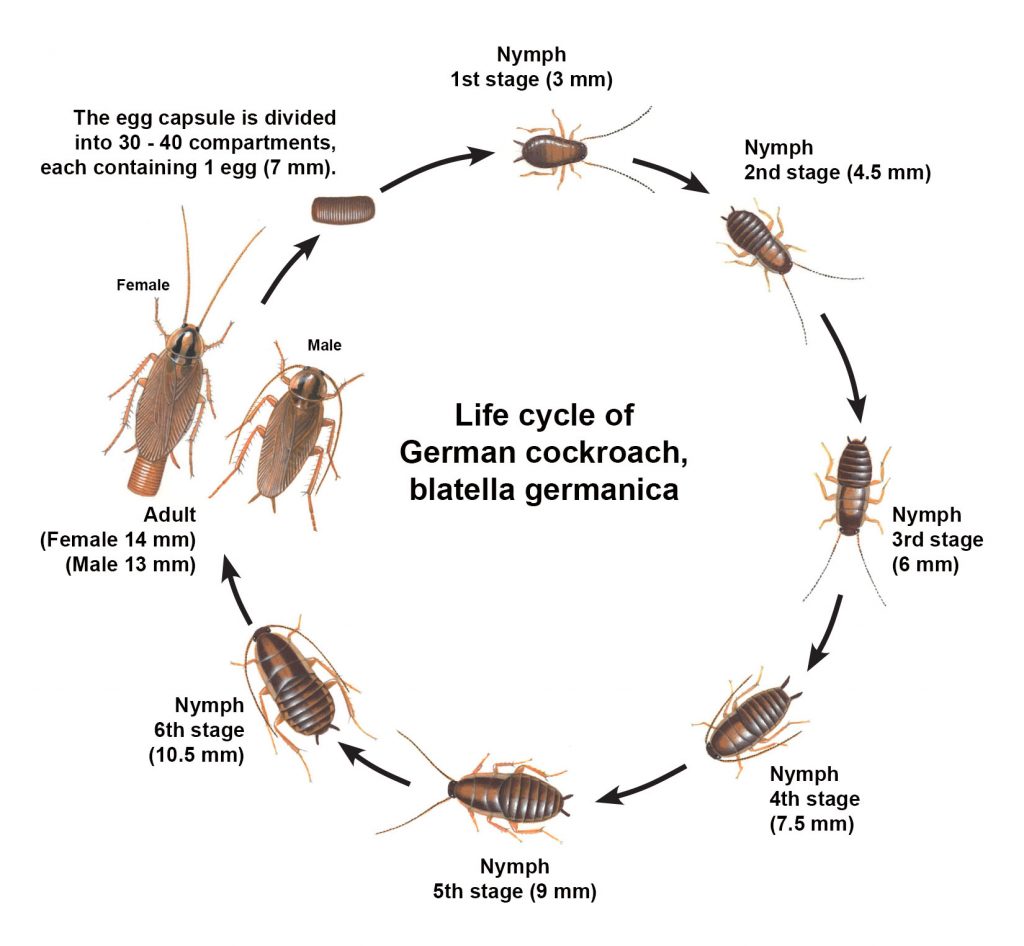
( Latin: Blattella germanica)
This is by far the most common species of cockroach in Europe.
For most people the idea of having cockroaches on the kitchen table is in- tensely unpleasant, but for those with an eye for such things these are elegant insects.
Both sexes have very well-developed wings, which cover the whole of the abdomen, but these are used not for active flying, but for gliding when they jump, for instance, from the table to the floor.

The female lays her eggs in a special brown capsule which is divided into 30-40 small compartments, each containing a single egg. In the German cockroach the female carries this egg capsule protruding from her genital aperture until the small, wingless young are ready to hatch out. At room temperature the full development to the adult stage takes about 6 months.
Cockroaches are practically speaking omnivorous. They are active at night, spending the hours of light hidden in crevices, particularly near warm places, such as ovens or radiators.
They are very gregarious, and a substance produced in the alimentary canal and passed out with the faeces may serve to attract and keep them together. During the mating period cockroaches are also motivated by scent. The females produce a scent which the males perceive by way of special sense organs on their antennae.
In many parts of northern Europe cockroaches occur in bakeries and restaurants, and also in hospitals, canteens, food factories and many private kitchens. Normally cockroaches cause no real damage. It has been suggested that they transmit disease but this has not been directly proved (see also p. 55).
On the other hand, there is a need to be watchful, for several species of pathogenic bacteria have been isolated from cockroaches caught at random. These insects may also destroy foods, partly by gnawing them, but mainly by fouling, and by tainting them with their unpleasant smell. Cockroaches also cause damage by gnawing paper, leather and textiles.





